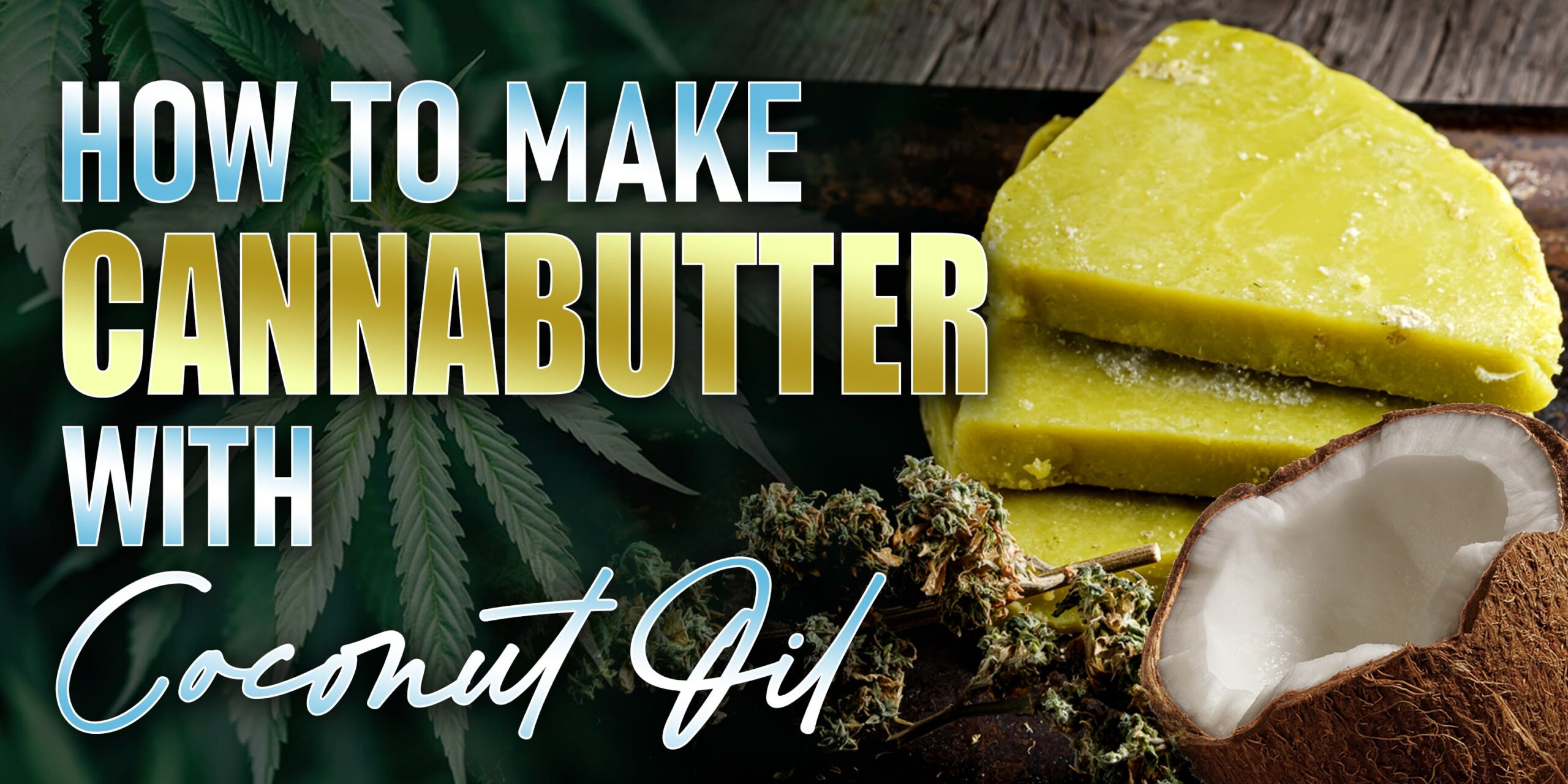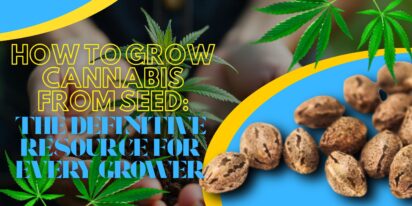Table of Contents

Table of Contents
Choosing the best ingredients sets the stage for making outstanding cannabutter. When getting cannabis flowers, go for organic types that are pesticide-free and clean, guaranteeing a pure and tasty infusion. Similarly, virgin coconut oil, taken from fresh coconut meat, gives a rich and fragrant foundation for blending with cannabis, adding a hint of tropical taste to your creations. By focusing on top-notch ingredients, you can enhance the flavor and strength of your cannabutter while reducing any possible health hazards from chemical residues.
During the infusion process, the magic of cannabutter truly happens as the cannabinoids from the cannabis flower mix with the fats in coconut oil, creating a powerful and versatile ingredient. To get the best results, it’s important to grasp the main principles of decarboxylation and infusion. Decarboxylation, or “activating” the cannabinoids, means heating the cannabis flower to change non-psychoactive compounds like THCA into THC, the main psychoactive part. This step ensures that your cannabutter gives the effects you want when you eat it. Then, the infusion process involves gently simmering the decarboxylated cannabis in coconut oil over low heat, letting the cannabinoids dissolve and attach to the fats in the oil. By mastering these basic techniques, you can unlock all the power of your cannabutter, getting the best potency and flavor every time you make it.
Decarboxylation is the vital first step in activating the cannabinoids in the cannabis flower, making sure your cannabutter gives the effects you want when you eat it. To start, heat your oven to 240°F (115°C) and line a baking sheet with parchment paper. Then, roughly grind your cannabis flower using a grinder, making sure the pieces are all about the same size. Spread the ground cannabis evenly on the prepared baking sheet, making sure not to put too much or let the pieces overlap. Put the baking sheet in the preheated oven and bake for 40-60 minutes, until the cannabis turns lightly golden and smells good. During decarboxylation, the cannabis is gently heated, changing non-psychoactive compounds like THCA into THC, the main psychoactive part that gives cannabis its effects. When decarboxylation is done, take the baking sheet out of the oven and let the cannabis cool before moving on to the next step of infusion.
Now that your cannabis is decarboxylated, it’s time to turn it into cannabutter by infusing it into coconut oil. Start by melting the virgin coconut oil in a double boiler or saucepan over low heat, making sure not to let it boil or burn. Once the coconut oil is melted, add the decarboxylated cannabis to the pot, stirring gently to spread it evenly. Let the mixture simmer on low heat for 2-3 hours, stirring occasionally to keep it from sticking or burning. During this time, the cannabinoids from the cannabis will dissolve into the coconut oil, giving it their beneficial properties and unique flavor. Keep a close eye on the temperature as it simmers, adjusting if needed to keep it gently bubbling. After 2-3 hours, take the pot off the heat and let the mixture cool a bit before straining it.
After the infusion is finished, it’s time to strain the mixture to get rid of any leftover plant bits and sediment, giving you smooth and strong cannabutter. To do this, put a piece of cheesecloth over a clean container or bowl, making sure it covers the opening completely. Slowly pour the infused coconut oil through the cheesecloth, letting it strain into the container below. Use a spatula or spoon to press gently on the cheesecloth, squeezing out as much infused oil as you can while leaving behind any solids or sediment. Once it’s strained, put the cannabutter in an airtight container and store it in the fridge. If you store it right, cannabutter can stay fresh and potent for a few months, ready to use in lots of different recipes.
Getting the right dose for your cannabutter is key to getting the effects you want without having too much. Things like how strong the cannabis is, how long you infused it for, and your own tolerance all matter when figuring out the dose. Begin with a small amount of cannabutter, like a teaspoon, and wait at least two hours before having more to see how it affects you. Keep a journal to record your dose and how you feel, so you can change things up next time if needed.
Creating cannabutter at home offers the chance to play around with various flavors, tailoring your creations to match your taste buds. Coconut oil adds a gentle tropical taste to cannabutter, blending well with the earthy notes of cannabis and giving a subtle sweetness. If you want a stronger coconut flavor, think about using toasted coconut oil or adding coconut extract while infusing. Or, you can spice up your cannabutter with herbs, spices, or other flavors, letting you make special infusions that fit your cooking style perfectly.
Becoming skilled at making cannabutter coconut oil is a fulfilling venture that lets you dive into a world of culinary adventures. By following our detailed guide and expert advice, you’ll have everything you need to whip up tasty and potent cannabis-infused treats right in your own kitchen. Whether you’re a seasoned cook or just starting out, trying out cannabutter lets you delve into the connection between cannabis and cooking, adding therapeutic benefits and unique flavors to your dishes. So, gather your ingredients, get ready to cook, and set off on a culinary journey with cannabutter leading the way.
Q: Can I use trim or shake instead of cannabis flower?
A: Yes, trim or shake can be used to make cannabutter, but keep in mind that potency may vary compared to using flower buds.
Q: How long does infused coconut oil last?
A: When stored properly in an airtight container in the refrigerator, infused coconut oil can last for several months.
Q: Can I use cannabutter in savory dishes?
A: Absolutely! Cannabutter adds a unique flavor and potency to a variety of savory recipes, including pasta sauces, sautés, and marinades.
Q: Can I freeze cannabutter for long-term storage?
A: Yes, freezing cannabutter is an excellent way to extend its shelf life. Simply portion it into individual servings and store in an airtight container in the freezer.
Q: How do I calculate the potency of my cannabutter?
A: To determine the potency of your cannabutter, consider factors such as the THC percentage of your cannabis, the amount used in the recipe, and the serving size.
Q: Can I use store-bought coconut oil for making cannabutter?
A: While store-bought coconut oil can be used, opting for virgin coconut oil ensures a purer flavor and higher quality infusion.

Curious about growing weed in a healthy, effective way? Welcome to the realm of weed hydro! This method uses water instead of soil, delivering n

Peyote Zkittlez is a unique cannabis strain that has quickly gained dedicated followers among enthusiasts and patients alike. Its parentage—Zk

As growers, we want strains that work well, are strong, and are of good quality. Autoflowering cannabis strains are a big step forward for both

Pot growers always ask the same basic question: How much weed does a weed plant produce? The answer is complex and depends on a multitude of var

Ever had the room spin after a few hits? You're not alone. Figuring out how to prevent getting dizzy high can make your cannabis experience a wh

Drying cannabis properly is a critical process in preserving the plant's full aroma and flavor and its psychoactive abilities. Tampering with th

Ever caught yourself a bit too high and all of a sudden in need of being normal? Whether you're heading out for munchies or bumping into someone

Looking for sage advice on how not to get pinched with weed without batting an eye? Attempting to protect your stash from gossipy roommates, sno

Nutrient lockout, also known as nutrient binding or chemical antagonism, is a significant issue in cannabis cultivation that negatively impacts

Germination is the most critical initial stage in growing healthy, high-quality cannabis plants. During germination, the dormant seed becomes a
Are You 18 Or Over?
By selecting “Continue”, you confirm that you are at least 18 years of age and legally permitted to access cannabis related content in your region.
By using Rocketseeds.com, you agree to our legal disclaimer.
Excellent blog here Also your website loads up very fast What web host are you using Can I get your affiliate link to your host I wish my web site loaded up as quickly as yours lol
Your writing is not only informative but also incredibly inspiring. You have a knack for sparking curiosity and encouraging critical thinking. Thank you for being such a positive influence!
Simply wish to say your article is as amazing The clearness in your post is just nice and i could assume youre an expert on this subject Well with your permission let me to grab your feed to keep updated with forthcoming post Thanks a million and please carry on the gratifying work
Somebody essentially lend a hand to make significantly articles Id state That is the very first time I frequented your website page and up to now I surprised with the research you made to make this actual submit amazing Wonderful task
Your blog is a beacon of light in the often murky waters of online content. Your thoughtful analysis and insightful commentary never fail to leave a lasting impression. Keep up the amazing work!
Thank you for the auspicious writeup It in fact was a amusement account it Look advanced to more added agreeable from you By the way how could we communicate
Your blog is a constant source of inspiration for me. Your passion for your subject matter shines through in every post, and it’s clear that you genuinely care about making a positive impact on your readers.
Your blog is a constant source of inspiration for me. Your passion for your subject matter is palpable, and it’s clear that you pour your heart and soul into every post. Keep up the incredible work!
Your articles never fail to captivate me. Each one is a testament to your expertise and dedication to your craft. Thank you for sharing your wisdom with the world.
Your blog is a testament to your dedication to your craft. Your commitment to excellence is evident in every aspect of your writing. Thank you for being such a positive influence in the online community.
Your writing has a way of resonating with me on a deep level. I appreciate the honesty and authenticity you bring to every post. Thank you for sharing your journey with us.
Your blog is a true gem in the world of online content. I’m continually impressed by the depth of your research and the clarity of your writing. Thank you for sharing your wisdom with us.
Hi i think that i saw you visited my web site thus i came to Return the favore Im attempting to find things to enhance my siteI suppose its ok to use a few of your ideas
Somebody essentially help to make significantly articles Id state This is the first time I frequented your web page and up to now I surprised with the research you made to make this actual post incredible Fantastic job
Usually I do not read article on blogs however I would like to say that this writeup very compelled me to take a look at and do so Your writing taste has been amazed me Thanks quite nice post
Your blog has quickly become one of my favorites. Your writing is both insightful and thought-provoking, and I always come away from your posts feeling inspired. Keep up the phenomenal work!
Every time I visit your website, I’m greeted with thought-provoking content and impeccable writing. You truly have a gift for articulating complex ideas in a clear and engaging manner.
Hey there You have done a fantastic job I will certainly digg it and personally recommend to my friends Im confident theyll be benefited from this site
I have read some excellent stuff here Definitely value bookmarking for revisiting I wonder how much effort you put to make the sort of excellent informative website
Nice blog here Also your site loads up very fast What host are you using Can I get your affiliate link to your host I wish my site loaded up as quickly as yours lol
What i do not understood is in truth how you are not actually a lot more smartlyliked than you may be now You are very intelligent You realize therefore significantly in the case of this topic produced me individually imagine it from numerous numerous angles Its like men and women dont seem to be fascinated until it is one thing to do with Woman gaga Your own stuffs nice All the time care for it up
Your blog is a beacon of light in the often murky waters of online content. Your thoughtful analysis and insightful commentary never fail to leave a lasting impression. Keep up the amazing work!
Your blog is a breath of fresh air in the often stagnant world of online content. Your thoughtful analysis and insightful commentary never fail to leave a lasting impression. Thank you for sharing your wisdom with us.
Your blog is a beacon of light in the often murky waters of online content. Your thoughtful analysis and insightful commentary never fail to leave a lasting impression. Keep up the amazing work!
Usually I do not read article on blogs however I would like to say that this writeup very compelled me to take a look at and do it Your writing style has been amazed me Thank you very nice article
Your writing has a way of resonating with me on a deep level. I appreciate the honesty and authenticity you bring to every post. Thank you for sharing your journey with us.
This hydroponics guide is quite the buzz, seriously! Who knew growing weed without dirt could be so complicated yet potentially rewarding? The breakdown of systems like DWC and NFT is helpful, though I suspect my cat might confuse the air pump for a toy. The idea of cleaner buds is tempting, especially since explaining hydro weed to my non-growing friends might get messy. And the bit about potential dizziness from hydro weed? Perfect, now I have an excuse for why I always stumble a bit after a grow session. Still, the promise of faster grows and higher yields is hard to ignore, even if it means more trips to the pH meter than to the coffee shop. Overall, a cultivating read for the curious grower!